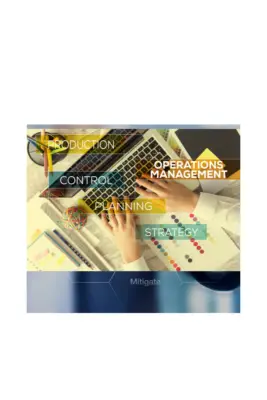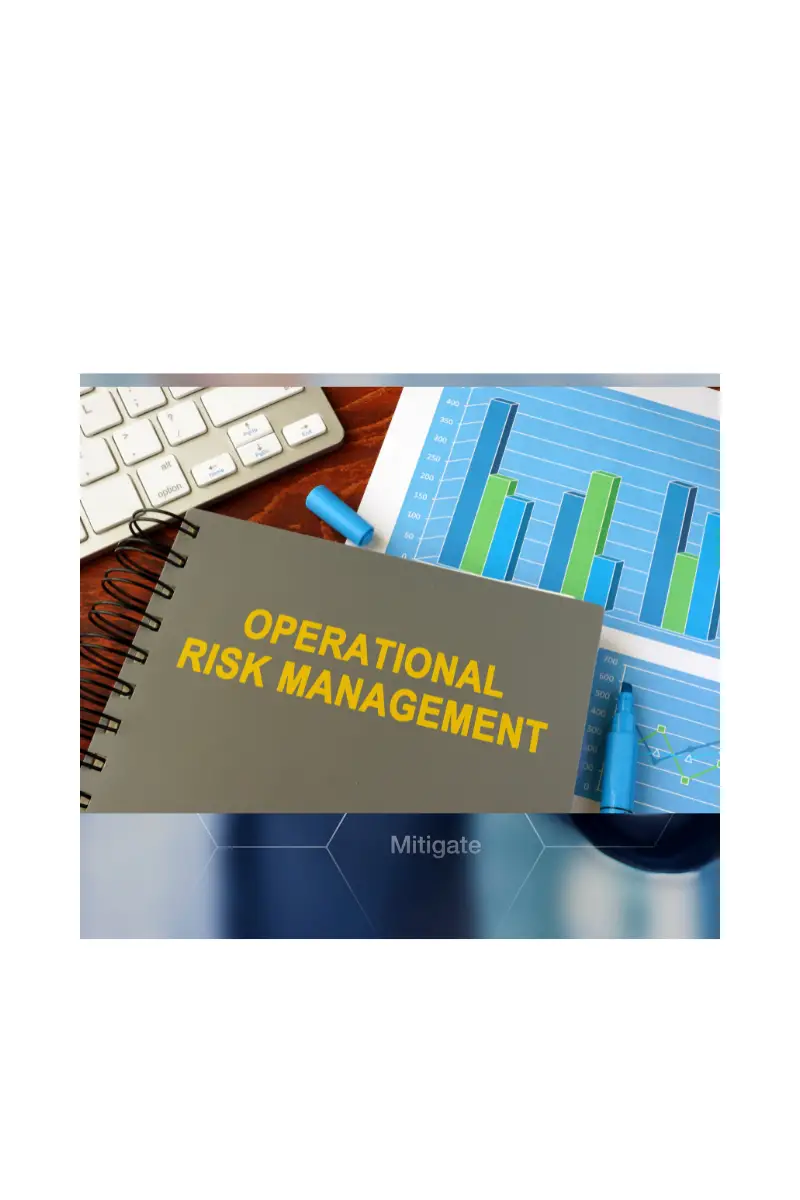Operational risk management is a critical process for organizations of all sizes. By establishing a framework and protocols for managing risks, businesses can protect their employees, customers, and bottom line. While there are many different approaches to operational risk management, creating a framework is a proven way to ensure comprehensive coverage.
Most organizations these days have in place some operational risk management framework. But what exactly is operational risk management, and how can you make sure your framework is effective?
Operational risk management is a process that helps organizations identify, assess, and control operational risks. Operational risks can include human error, system failures, natural disasters, and more. By implementing a formal process for managing operational risks, organizations can reduce the likelihood of these events causing significant disruptions or financial losses.
Operational risk management has become an essential part of doing business in our increasingly complex and interconnected world. Every day, organizations face a range of risks that can seriously impact their ability to achieve their strategic objectives. Organizations against these risks businesses need to develop a practical operational risk management framework. This framework should include all the necessary steps to identify, assess, and respond to potential risks. By following this framework, businesses can minimize the chances of something going wrong and protect themselves against costly disruptions.
In this blog post, we’ll explore those questions and more. We’ll start by defining operational risk management and then discuss an effective framework’s key components. Finally, we’ll give you a few tips on how to get started with operational risk management in your organization.

The Primary Objective of Operational Risk Management
The primary objective of operational risk management is to protect the organization from potential financial losses that events or processes could cause within the organization. It includes risks to people, processes, information, and property.
- To identify, assess, and manage operational risks.
- To protect the organization from potential losses arising from operational failures.
- To improve the organization’s resilience to operational disruptions.
- To ensure continuity of operations in the event of a disruption.
- Preventing losses due to operational failures (e.g., system outages, human error, fraud.
- It Mitigates risks related to business continuity and disaster recovery planning.
- It Reduces regulatory compliance risks.
- Protecting the reputation of the organization
Purpose of Operational Risk Management
- To identify, analyze, and manage risks to the organization’s ability to achieve its strategic objectives.
- Ensure that the necessary controls are in place to protect the organization’s assets, reputation, and earnings.
- To improve decision-making by providing a systematic approach to evaluate risks.
- To create a culture of risk awareness throughout the organization.
- To ensure that risks are managed consistently and controlled across the organization.
- To protect stakeholders’ interests by ensuring that risks are taken into account in decision-making.
- To provide a framework for identifying, assessing, and responding to risk events.
- To promote a culture of risk awareness and risk management throughout the organization.
Key Components of an Effective Operational Risk Management Framework
- A risk management framework that outlines key operational risks and how they will be managed defines what is included in the category of operational risk.
- Risk Identification and assessment of operational risks, including people, processes, technology, and the environment. Assign responsibility for risk identification and assessment.
- Development of response plans for identified risks and regular testing of these plans.
- Implementation of a reporting structure for operational risk events and near misses.
- Continuous improvement of the risk management process based on lessons learned.
Operational Risk Management Steps
- Understand the business operational risks. Risks posed by understanding both internal and external environments of your organization and industry standards market conditions. It also includes what products or services it offers for sale (size) and growth prospect. if any within these parameters given current trends/standards set forth within the organization’s stability over time. They can be influenced by management decisions made now versus later when more resources might become available again should things change drastically.
- Identify and assess potential threats to business operations.Potential threats to business operations. These might include environmental variables such as weather patterns, population density and pollution levels; social influences like public opinion polls or consumer behavior studies which can be used for marketing purposes .Competitors looking into your success rates customer satisfaction ratings etc. physical dangers including natural disasters (though not hurricanes!). These earthquakes/tsunamis could damage buildings causing loss revenue . It harms employees’ well-being if they’re present at work during an event – this would negatively impact productivity.
- Develop risk management plans to address identified threats. To protect against the identified risks, operational risk management plans should be developed to populate and mitigate those threats.
- Implement and monitor risk management plans. Implement the risk management plans and monitor them to ensure they are being followed. Using a logbook is a great way to record information about the plan, dates that activities have been carried out, who has completed these tasks.
- Review and update risk management plans as needed. Review the risk management plans regularly to ensure they are still relevant and update them as needed.
These steps can seem pretty straightforward, but operational risk management becomes more complex when executing these tasks. Working with different departments within an organization requires creating effective communication channels that allow for critical information to be shared promptly.
Principles for Sound Management of Operational Risk Management
- Establish a governance framework and organizational risk appetite.
- Assess and prioritize risks.
- Implement an integrated risk management process.
- Use data and analytics to identify, assess and manage risks.
- Manage the risk environment proactively.
- Escalate and report significant risks promptly.
- Embed risk management into business processes.
- Continuously improve operational risk management practices.
- Use checklists, protocols, and other tools to help you manage risks effectively.
- Take a holistic approach to managing risk – consider all potential risks, not just those that are immediately apparent.
- Train employees on how to identify and manage risk.
What are The 4 main types of Operational Risk?
- Business risk – A company’s ability to generate future profits will be adversely affected by factors such as competition, changes in technology, or recessionary economic conditions.
- Financial risk – A company will not be able to repay its debt or meet its financial obligations as they come due.
- Regulatory risk – The risk that government regulations (or the lack thereof) will hurt a company’s business.
- Reputation risk – The risk that negative publicity or events will damage a company’s reputation and cause customers or clients to leave.
How Do you Implement Operational Risk Framework?
- Make sure that everyone in your organization understands the definition of operational risk.
- Define your risk appetite – this will help you determine which risks are unacceptable and which risks you are willing to take.
- Develop a process for assessing, managing, and mitigating operational risks. It should include steps for identifying potential risks, evaluating the likelihood and impact of those risks, and implementing preventative measures.
- Review your processes regularly to ensure that they are still effective in mitigating risk.
- Continuously educate employees on identifying and mitigating risk, including operational and cybersecurity threats, and fraud prevention.
What Are the Four Phases of Operational Risk Assessment?
- Preliminary phase: The organization identifies and defines the risks that could affect its ability to achieve its objectives.
- Identification phase: The organization gathers information on the risks identified in the preliminary stage.
- Analysis and evaluation phase: In this phase, the organization assesses the likelihood and severity of each risk and determines whether it is a significant risk to the organization.
- Mitigation or treatment plan development phase: In this stage, the organization develops a plan to mitigate or reduce each significant risk identified in step 3.
Operational Risk Management Matrix
An operational risk management matrix is a tool used to assess and categorize the potential risks associated with an organization’s operations. The matrix can help identify which areas of operation are most at risk and help prioritize and guide efforts to manage those risks.
The matrix is typically organized by type of risk (e.g., financial, safety, legal) and within each class by severity (e.g., low, medium, high). Risks are then assessed and placed within one or more cells in the matrix based on their likelihood of occurrence and severity of impact. It allows organizations to quickly see which areas pose the most significant risk and require the most attention.
Benefits of operational risk management matrix
- Improving communication and coordination between different parts of the organization;
- Improving the accuracy of data collected and analyzed;
- Facilitating better decision making; and
- Improving overall organizational risk management.
- It helps track mitigation measures and performance over time.
- It enhances risk analysis and decision-making processes.
Conclusion
A comprehensive and well-thought-out operational risk management framework is essential for any business. By taking the time to implement a practical ORM framework, companies can protect themselves from potential financial losses and other damages that unforeseen events or circumstances may cause.
To ensure the safety of employees, customers, and other interested parties, organizations need to have a comprehensive operational risk management framework in place. The primary objective of ORM should be the protection of these stakeholders while also ensuring the organization can continue to function in an incident.
While there are many different ways to set up an ORM framework, the steps and principles outlined in this article provide a good starting point. Have you put a formal operational risk management framework for your company into place? If not, what steps will you take to get started.?

Chris Ekai is a Risk Management expert with over 10 years of experience in the field. He has a Master’s(MSc) degree in Risk Management from University of Portsmouth and is a CPA and Finance professional. He currently works as a Content Manager at Risk Publishing, writing about Enterprise Risk Management, Business Continuity Management and Project Management.

